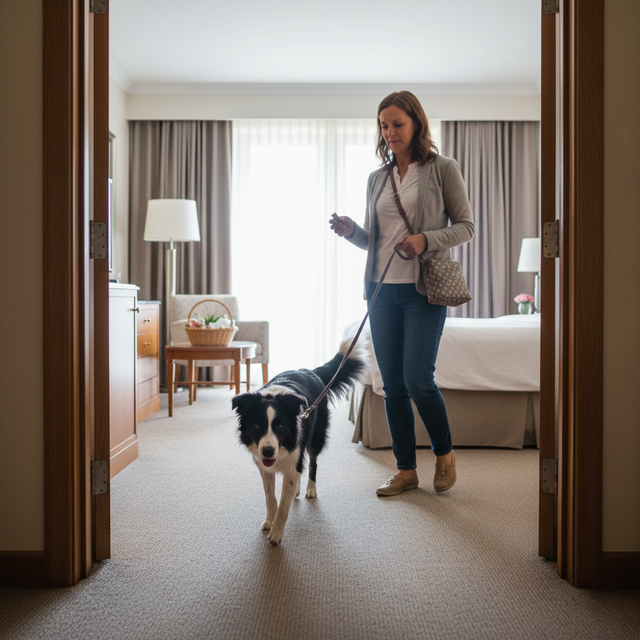That moment of anticipation is familiar to every dog parent: you grab the leash and your canine companion’s favorite gear, ready to embark on a new adventure to a bustling farmer's market, a friend's home, or a new hiking trail. But what begins with excitement can sometimes turn to anxiety - for your pup and for you. The key to turning uncertain steps into a confident voyage is understanding how to introduce new environments positively and effectively. The universal solution is patient, positive exposure, but the how depends entirely on your dog’s unique personality.
Ready to discover the best approach for your teammate? Take the
PUPEYE Archetype Quiz to unlock personalized insights!
Understanding the 'Why' Behind the Worry
A new environment is a sensory overload for a canine companion. Unfamiliar sights, sounds, and smells can be overwhelming. This reaction isn't mischievous or spirited; it’s a natural survival instinct. Understanding concepts like trigger stacking (where multiple small stressors add up to a big reaction) and fear periods (developmental stages where pups are more sensitive) helps us approach the situation with compassion and knowledge.
Essential Gear for Any Expedition
Being prepared is key to a successful journey. Before you venture out, ensure your equipment is in order.
- A Secure Harness & Leash: These tools provide safe management without causing discomfort, allowing for clear communication.
- High-Value Rewards: Special treats reserved just for these adventures create a powerful positive association.
- A Portable Mat or Bed: This creates a familiar "safe zone" or "home base" for your pup, no matter where you are.
Universal Guidance for Confident Journeys
These fundamental steps apply to all dogs, regardless of their archetype.
- Start Small, Win Big: Your first voyage shouldn't be a three-hour festival. Begin with short, successful visits to a quiet park or the outside of a pet-friendly store. The goal is to leave them wanting more, not feeling overwhelmed.
- Allow for Observation: Don’t force your pup to interact. Let them watch from a distance where they feel safe. This allows them to process the new environment at their own pace.
- Create Positive Associations: Freely give high-value treats and praise simply for being calm in the new space. You are building a new, positive memory that will counteract any anxiety.
- Become a Body Language Expert: Learn to recognize your dog's subtle signs of stress: lip licking, yawning when not tired, a tucked tail, or "whale eye." End the expedition before they become overwhelmed, always finishing on a positive note.
Personalized Guidance for Your Dog's Archetype
Here is where we tailor the approach to your dog's specific needs, turning foundational knowledge into personalized, actionable guidance.
The Captain
The steadfast Captain craves order and clear leadership from their dog parent. To build their confidence, you must provide structure.
- Establish a Routine: Before entering the new environment, perform a familiar routine, like a few simple focus exercises. This puts them in a structured mindset.
- Give Them a Job: Ask for a "sit" or "down" on their portable mat. This gives your Captain a clear and calming task, reinforcing your role as a confident leader and letting them know that you have the situation under control.
The Pirate
A clever Pirate needs to have their mind engaged, or they'll find their own mischievous entertainment. Turn new environments into a game to channel their energy productively.
- Start a Treasure Hunt: As soon as you arrive, toss a few high-value treats on the ground and say "Find it!". This immediately engages their brain and nose, focusing their attention on a fun puzzle instead of potential stressors.
- Pack a Puzzle: Bring a favorite puzzle toy. Working to get a reward is far more engaging for a Pirate than simply being handed one.
The Explorer
The independent Explorer thrives on novelty and discovery but needs to know they can do so safely. Your goal is to provide freedom within safe boundaries.
- Use a Long Line: In a safe, open area, use a long leash (15-20 feet). This grants them the freedom to discover and investigate at their own pace while ensuring you remain their safe anchor point.
- Establish a Home Base: Position their bed or mat as a familiar sanctuary they can retreat to after an expedition. It's their portable basecamp, allowing them to rest and recharge for the next journey.





